Top 10 Biggest Football Stadiums in England 2025
By ICON TEAM | Published on Jul 08, 2025
List Of Top 10 Biggest Football Stadiums in England for 2025:
England's national sport, football, is deeply ingrained in the country's culture. The stadiums where this cherished game is played are more than just places to watch; they are sacred spaces where rivalries are formed, history is produced, and supporters come together in fervent support. By 2025, England will have some of the world's biggest and most recognisable football stadiums, each with its own distinct history and ambiance. Based on the most recent data, the top 10 largest football stadiums in England are examined in depth below, arranged by number of seats. With their cutting-edge architecture and fan-focused designs, these enormous stadiums not only display the splendour of English football but also the sport's development.
1. Wembley Stadium:

At 90,000, Wembley Stadium in London is the largest football stadium in the United Kingdom and the second largest in Europe, making it the undisputed king of English stadiums. The Football Association owns Wembley, which hosts the England national team and serves as the venue for important domestic competitions such as the League Cup Final, FA Cup Final, and other playoff finals. The famous original Wembley was replaced by the current Wembley in 2007, which preserved its history while adding cutting-edge elements like the Wembley Arch, the world's longest single-span roof structure, which rises 134 meters. In addition to football, it accommodates boxing fights, concerts, and NFL games. In 2006, a Champions League match between Tottenham Hotspur and Bayer Leverkusen drew a record-breaking 85,512 spectators. Wembley's reputation as a major sporting venue is cemented by its grandeur and adaptability.
2. Old Trafford Stadium:
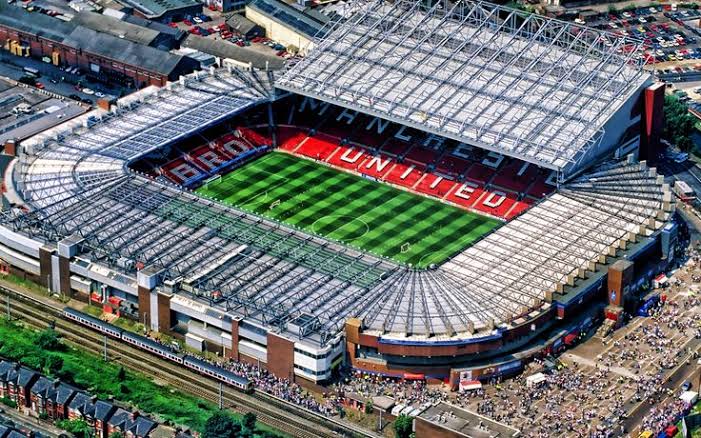
With 74,310 seats, Manchester's Old Trafford, also referred to as the "Theatre of Dreams," is the biggest club-owned stadium in England. This iconic stadium, which has been home to Manchester United since 1910, has seen many victories, including multiple Premier League crowns and European glory. Old Trafford has had major expansions despite its age, but ideas for a possible 100,000-seat "Wembley of the North" by 2030 have been spurred by the stadium's leaking roof and deteriorating infrastructure. The stadium has a long history that includes hosting international games, the 2003 Champions League Final, and surviving World War II bombardment. With its museum and tour centre providing an in-depth look into Manchester United's legendary past, Old Trafford continues to be a destination for football enthusiasts.
3. Tottenham Hotspur Stadium:

With a capacity of 62,850, the Tottenham Hotspur Stadium in North London is the largest club stadium in London and was opened in April 2019. It is a marvel of contemporary engineering. This cutting-edge stadium, which was constructed on the site of the former White Hart Lane, has a retractable, separating surface that shows synthetic turf for events like concerts and NFL games. Its single-tier South Stand, which can hold 17,500 people, produces one of the liveliest scenes in English football. With great sightlines and first-rate hospitality sections, the stadium's architecture places a focus on the spectator experience. In addition to Tottenham Premier League games, it will host international games and well-known concerts. It stands out in the English football scene thanks to its state-of-the-art facilities.
4. London Stadium:

With a football capacity of 62,500, the London Stadium in Stratford, East London, was built for the 2012 London Olympics and has been home to West Ham United since 2016. The stadium's layout, which was initially intended for athletics, drew criticism from supporters, although improvements have enhanced the football atmosphere. With a flexible layout, it can accommodate up to 80,000 people for non-football activities and hosts NFL games, concerts, and athletic events. The stadium's multipurpose appeal is highlighted by its state-of-the-art amenities and its staging of high-profile events like boxing contests including Anthony Joshua. The stadium is now a major force in English football because to West Ham's European campaigns, which have also given it new life.
5. Anfield Stadium:
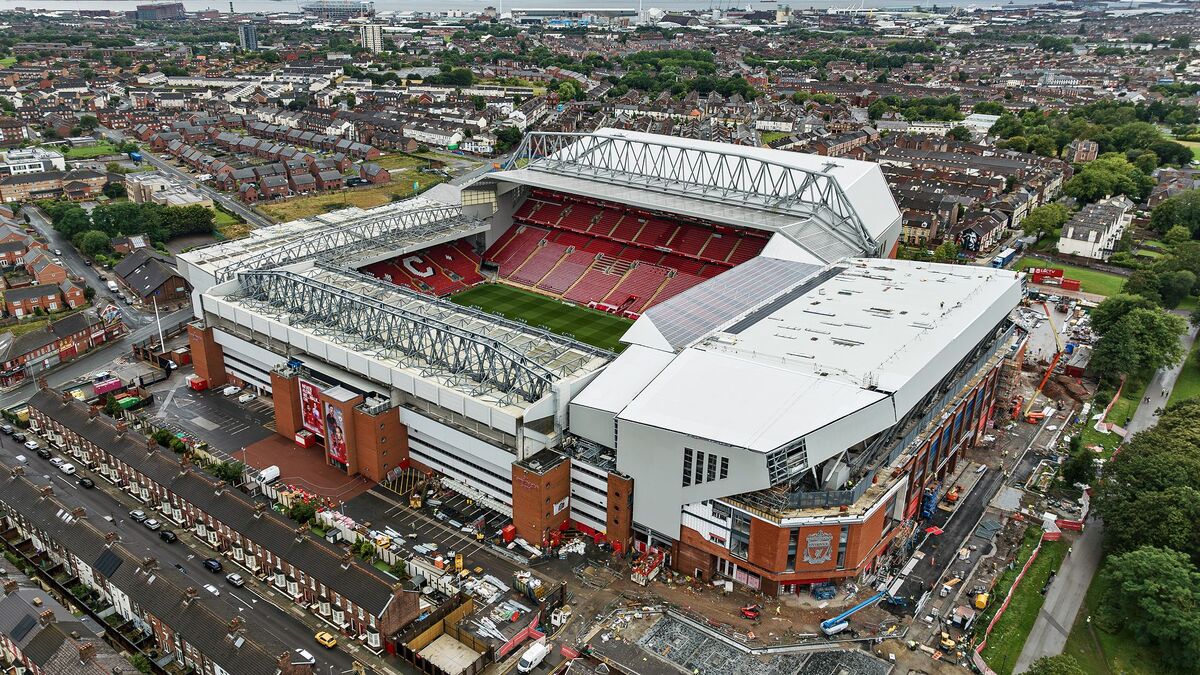
With a capacity of 61,276, Anfield, the home of Liverpool FC since 1892, is one of England's premier stadiums. Known for its thrilling ambiance, especially on European evenings, Anfield's famous Kop Stand is a wall of emotion and noise. Its capacity has been enhanced by recent additions, such as the Anfield Road Stand, making it the fifth-largest football stadium in England. The Hillsborough Memorial and Shankly Gates at the stadium honour Liverpool's illustrious past and the resilient nature of its supporters. The 2019 Champions League semifinal comeback against Barcelona was one of the unforgettable games played at Anfield, and the team's "You'll Never Walk Alone" hymn is still one of football's most eerie customs.
6. Emirates Stadium:

With a capacity of 60,704, Arsenal's Emirates Stadium is the sixth-largest football stadium in England. It opened in 2006. The Emirates, which replaced the cherished Highbury, was built with unhindered vistas and contemporary conveniences to optimise fan comfort. It has a continental flair because to its "bowl" form, which deviates from conventional four-stand designs. The stadium is renowned for its "Arsenalization" initiatives, which aim to incorporate club legacy into its contemporary structure. It has held Brazil international friendlies. Even while some detractors complain that the atmosphere is sometimes more clinical than at older stadiums, the Emirates is still a key component of Arsenal's goals and a top football destination in London.
7. Elland Road Stadium:
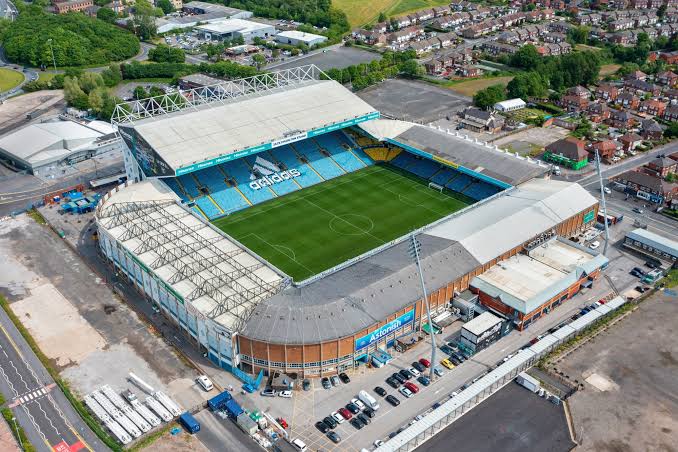
With a capacity of 37,890, Elland Road, the home of Leeds United since their founding in 1919, is the seventh-largest football stadium in England. This old stadium in Yorkshire is well known for its tremendous atmosphere, especially during ferocious Yorkshire derbies. Since its 1897 opening, Elland Road has undergone contemporary renovations to accommodate all-seaters while maintaining its Victorian elegance. It is one of the most daunting arenas for away teams because of its fervent fan base, particularly in the Don Revie Stand. Leeds is vying for promotion to the Premier League in 2025, and Elland Road's importance in English football is only increasing due to its history of hosting FA Cup semifinals and England Under-21 games.
8. Etihad Stadium:
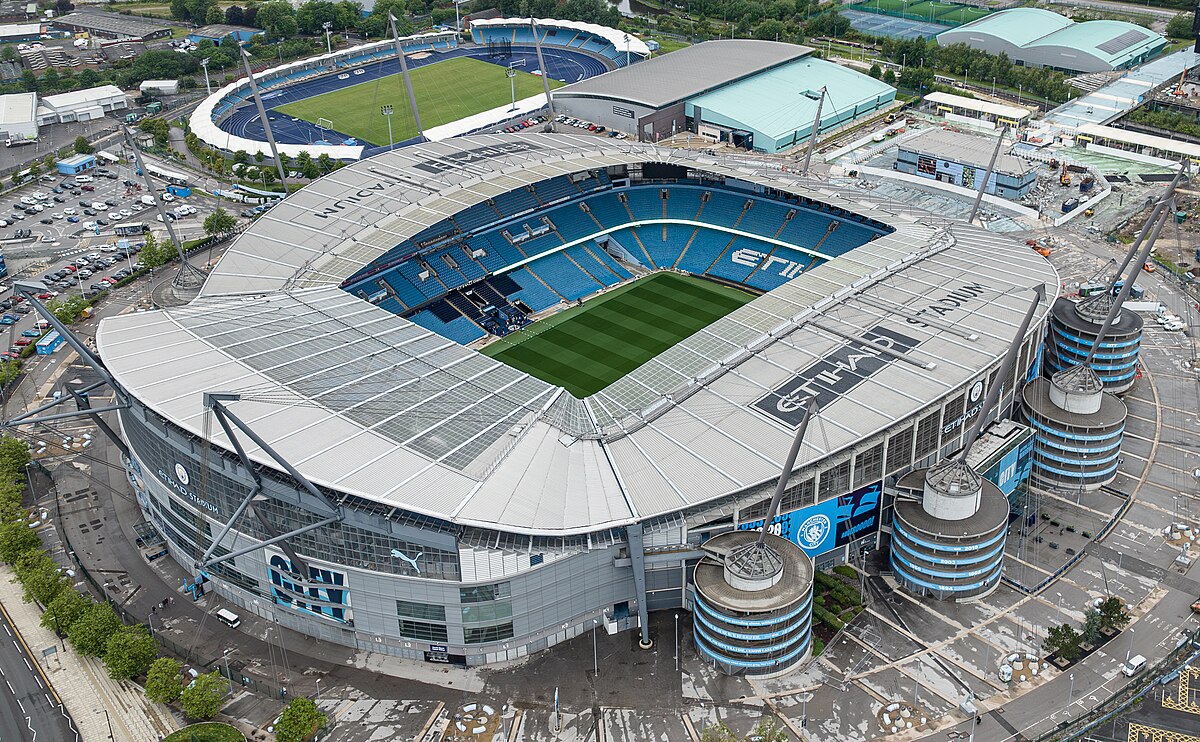
With 53,400 seats, Manchester's Etihad Stadium, which has been home to Manchester City since 2003, is the eighth-largest football stadium in England. The stadium, which was originally constructed for the 2002 Commonwealth Games, was converted for football and now offers a contemporary matchday experience, with ambitions to expand to 60,000 spectators. Its unique architecture and first-rate amenities have made it a worldwide monument that reflects Manchester City's ascent to prominence. The movable roof of the Etihad adds adaptability for concerts and other events. Even if there are sometimes jokes about empty seats, there is an electrifying atmosphere during major games, particularly in European events.
9. St. James' Park:

With a capacity of 52,404, St. James' Park, where Newcastle United has played since 1892, is the ninth-largest football stadium in England. Its asymmetrical layout, together with the tall Milburn and Leazes Stands, produces a dramatic cityscape in the centre of Newcastle upon Tyne. One of the Premier League's most intense atmospheres is created by the "Toon Army," especially during crucial games. England internationals, Euro 96 games, and performances by bands like The Rolling Stones have all taken place in the stadium. St. James' Park is still a footballing stronghold, although plans for a new stadium at Leazes Park could move Newcastle up the list in the future.
10. Light Stadium:
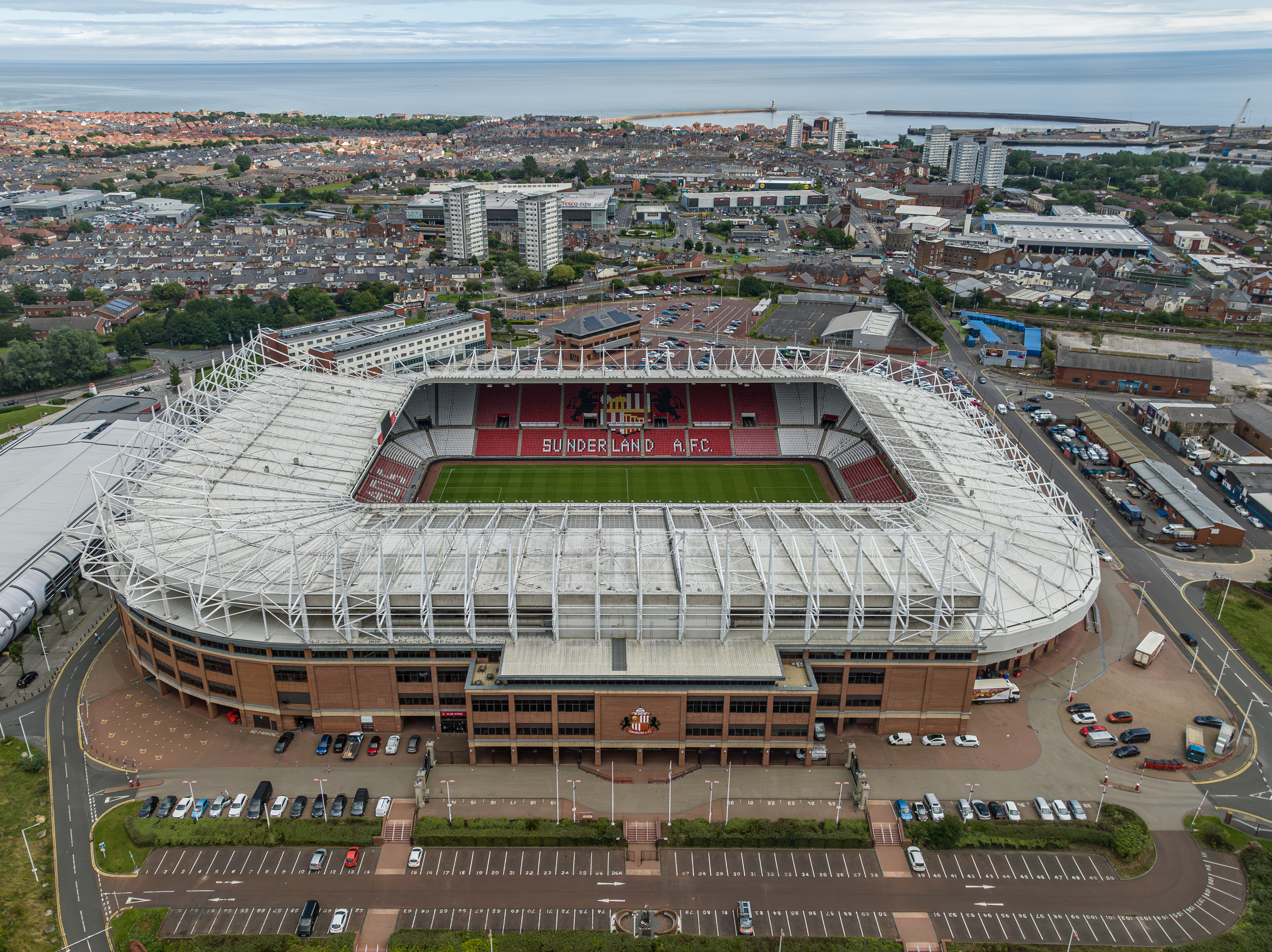
With a 48,707-seat capacity, Sunderland's Stadium of Light completes the top 10. Named in honour of the area's mining history, this contemporary stadium took the place of Roker Park when it opened in 1997. The Stadium of Light's size and amenities are comparable to those of many Premier League sites, even though Sunderland is currently in the EFL Championship. It can accommodate more than 55,000 people for non-football events and has played host to England internationals and Beyoncé concerts. The stadium's impressive architecture and fervent supporters set it apart in English football's lower divisions, especially as Sunderland hopes to be promoted in 2025.
Comments 0